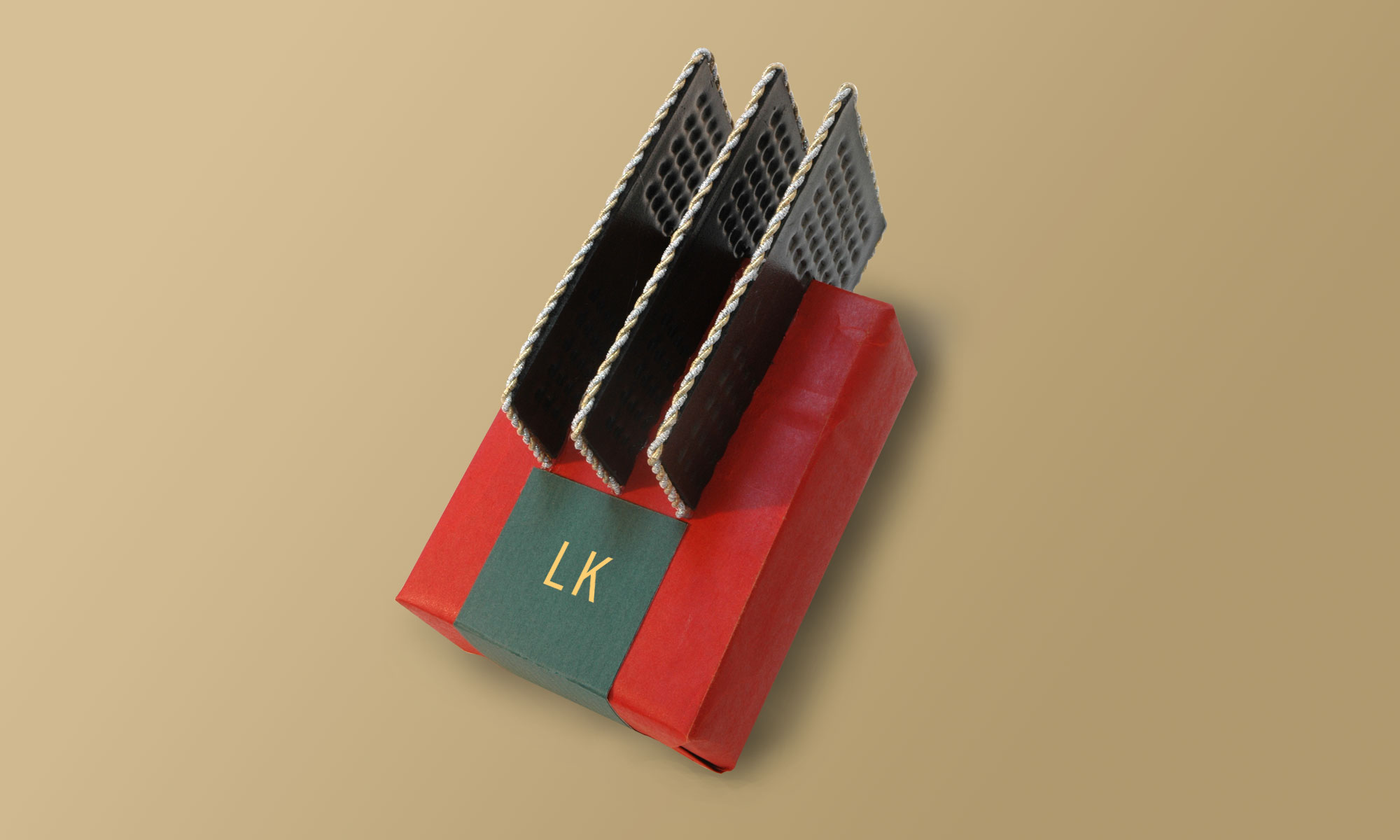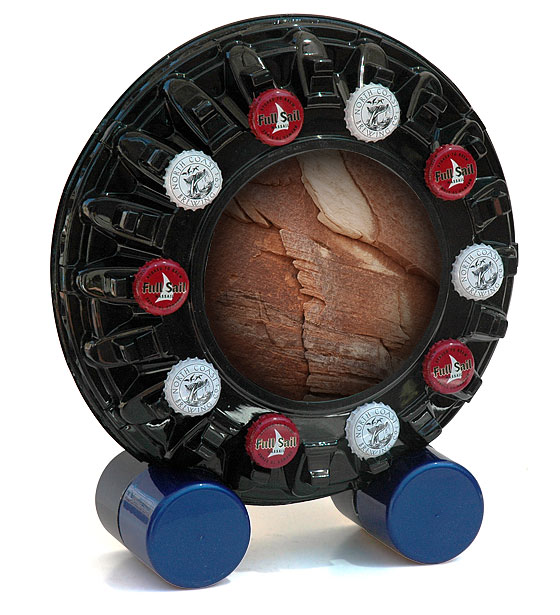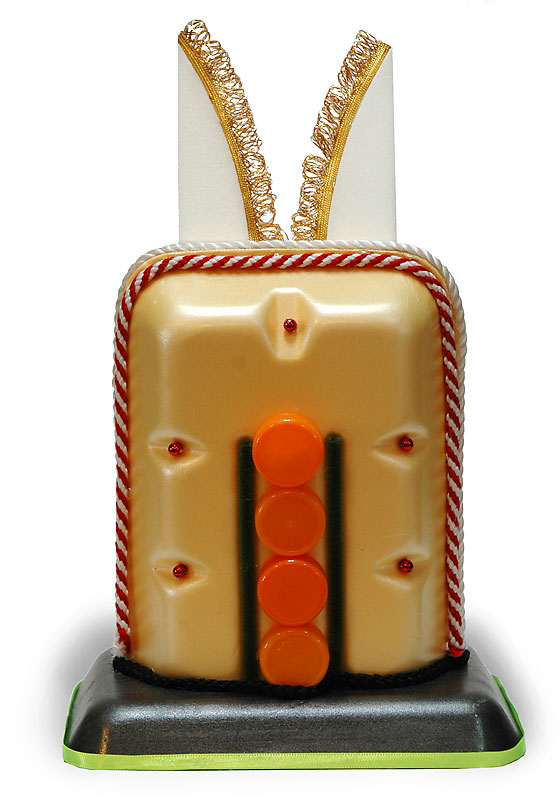Pies from our Whole Foods come in marvelous molded-plastic containers. Put the bottom halves from two of them together and you have a strange round device that resembles some kind of off-road tire, or perhaps the base form of a dark space ship.
Those two pieces of black plastic are glued together using 1-inch-long pieces of popsickle sticks. They are hot-glued into little slots conveniently located around the molded shape of the pie-bin bottoms
I next made the feet for this wrap using four lids from aerosol deodorants. Their plastic is metallic adding more machine aesthetic to this peculiar wrap.
I glued a sequence of bottle caps on ten of the twenty raised knobs that ring the pie bottoms’ flat central circle, adding to the visual theme of circles. Their detailed design and printing enriches the design by bringing a finer level of detail to the complex but larger forms of the black plastic.
It actually took a while to figure out what to put in that central, flat circular space. I cut out various magazine-ad photographs and also fragments of wrapping paper and art paper. Nothing seemed to be compelling. I finally decided to use my own photography. I made a circular crop of a photo I took last week while hiking in the Comb Ridge of southern Utah. I added a black “inner glow” in Photoshop. I printed it, cut it out and glued it into the circular recess.
In order to spare the recipient the potential anxiety of having to destroy such a curious sculpture, I cut out the circular recess on the back side and made it into an access door closed with simple tape fixtures.


